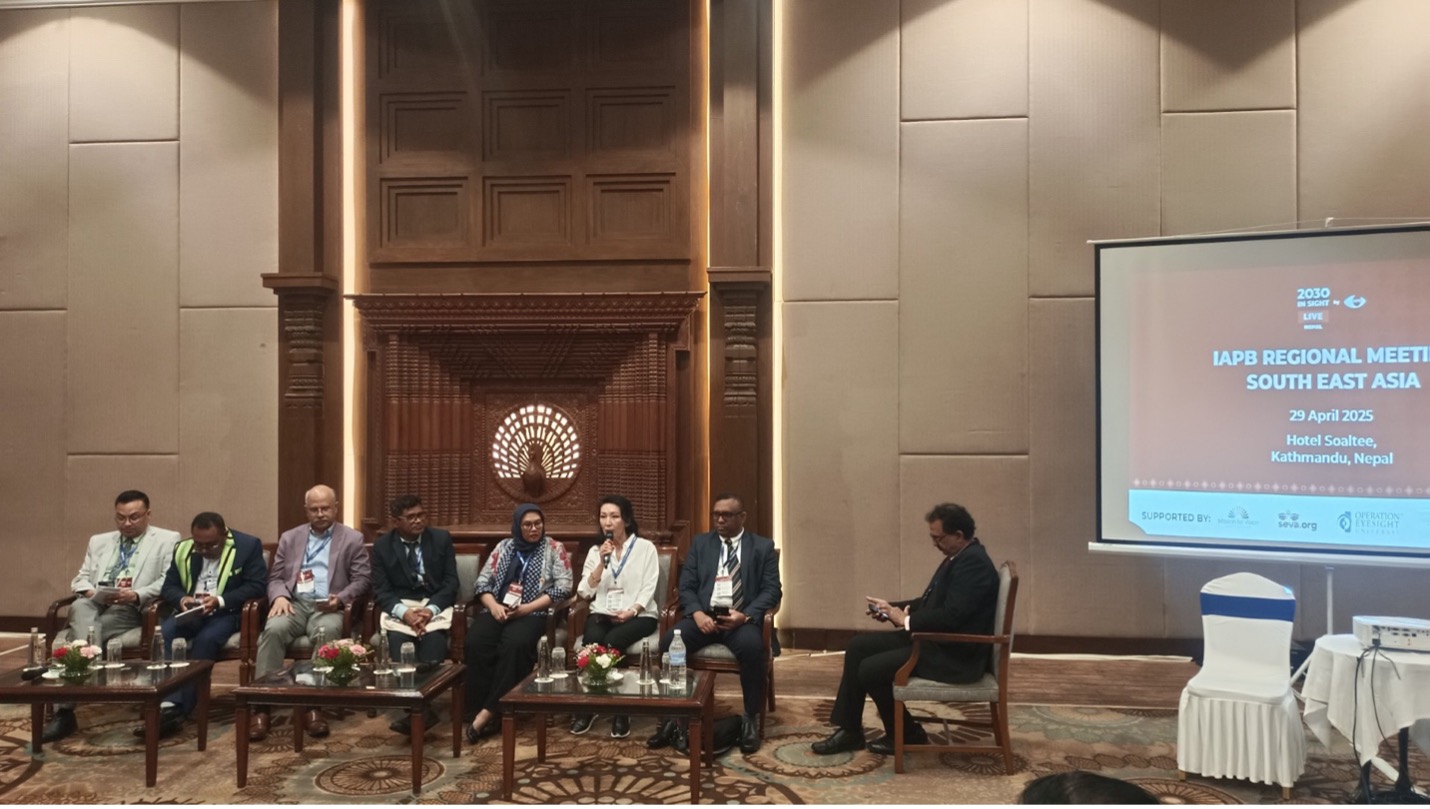Join the Leading Global Eye Health Alliance.
Membership-
Choose an alternate language here
As part of 2030 IN SIGHT LIVE, Nepal, the IAPB South-East Asia (SEA) Regional meeting was successfully convened on 29th April in Kathmandu on the sidelines of the event. It brought together over 145 delegates, including government representatives, IAPB country chairs, IAPB member organizations, WHO officials, and other key stakeholders from across the region. As we approach 2030, the event served as a vital platform to share progress, discuss common challenges, and align strategies towards achieving the WHO Integrated People-Centred Eye Care (IPEC) framework and the 2030 In Sight targets.
IAPB country chairs and government representatives from eight countries of the region participated in panel discussions to assess national progress, implementation bottlenecks, and the way forward for integrating IPEC and 2030 In SIght within national health systems. Our members actively working in the region shared ongoing efforts in eye care delivery, capacity building, and systems strengthening. WHO representatives provided updates on action plans and technical support for IPEC implementation in the region. The meeting also served as an advocacy platform to mobilize regional support for the upcoming Global Summit for Eye Health, underlining the need for collective action and commitment. The meeting provided a unique space for networking, knowledge exchange, and strategic planning.

There was broad consensus on elevating eye health as a development priority, rather than just a health sector issue. While countries may vary in system design and priorities, they face shared challenges, including workforce distribution, financing, and data availability.
Key recommendations emerging from the discussions included:
The meeting also called for a regional push to meet global targets for refractive error and cataract, while simultaneously prioritizing achieving targets related to diabetic retinopathy and trachoma elimination.
It reaffirmed the importance of multi-sectoral collaboration and a unified regional approach in accelerating progress towards universal eye health.
This year’s meeting was made possible through the generous support of Cure Blindness Project, Eye Care Foundation, Mission for Vision, Operation Eyesight Universal, and SEVA Foundation.
IAPB South-East Asia hosts the regional meeting annually to sustain momentum, facilitate meaningful dialogue, and drive collective action towards the shared vision of a world where no one experiences avoidable sight loss.